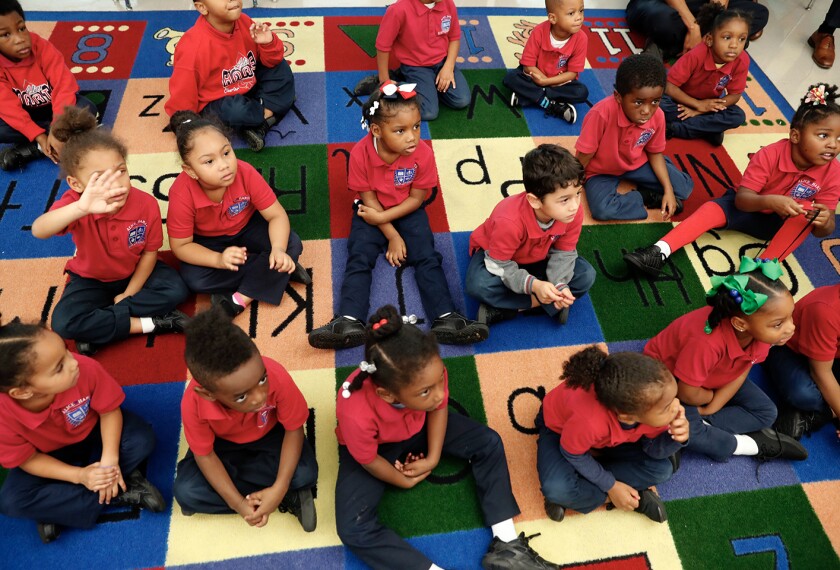New Hampshire lawmakers hammered out an agreement over kindergarten funding late last week, emerging with a plan that closely resembles the one Democratic Gov. Jeanne Shaheen had proposed.
The compromise bill, crafted by a House and Senate conference committee June 5, did not include vouchers for poor families to send their children to private kindergarten programs, an element that Republicans fought hard to keep but that the governor said was unacceptable.
The plan, which Gov. Shaheen has said she will sign, however, would give districts that provide kindergarten $750 per child--a 50 percent increase over the current law. The state would also borrow money to pay 75 percent of classroom construction costs in districts that don’t offer kindergarten programs but wish to do so.
“We can live with that,” said Paul Krohne, the executive director of the New Hampshire School Boards Association, as he waited last week for news of the conference committee’s decision.
A tax hike on cigarettes will pay for the kindergarten funding increase and wipe out the $45 million budget deficit Ms. Shaheen inherited when she took office this year. The kindergarten funding is expected to be available for the coming school year.
The legislature passed the state’s first kindergarten funding bill last year, giving $500 per child to districts that offered the program. This year, wrangling over growth in the program has been a dominant topic in the legislature.
With kindergarten expansion the centerpiece of her 1996 campaign, Gov. Shaheen introduced a $22 million plan that would have doubled funding to $1,000 per child. Her original proposal also would have picked up all the construction costs in districts without kindergarten, and 75 percent in districts with programs that needed to add classrooms or make renovations.
The Senate bill included no construction money, but funneled $10 million more into the regular funding formula. Under the Senate plan, districts would have continued receiving $500 per child, poorer communities would have gotten $750, and the poorest would have received $1,000. That proposal also included $1,000 vouchers so poor families in districts without kindergarten could send their children to private schools.
--LINDA JACOBSON




